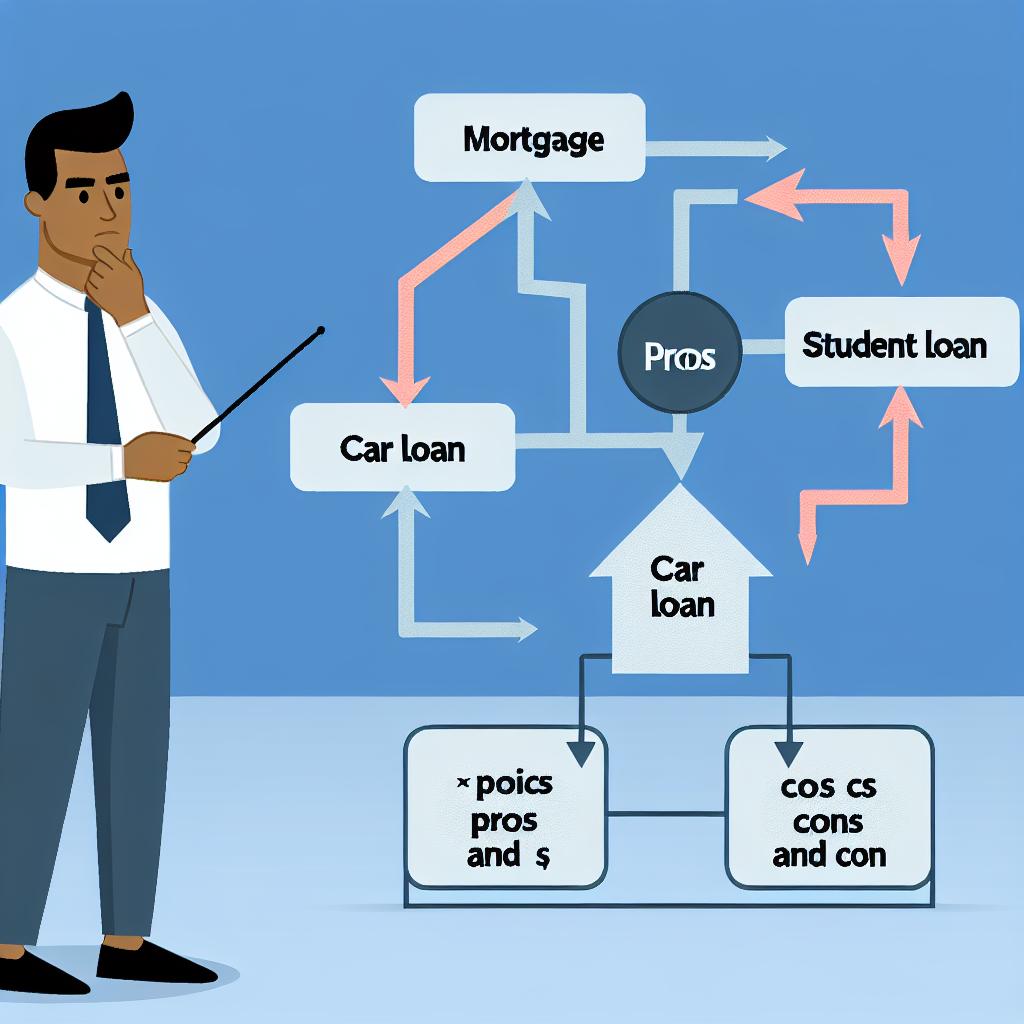Understanding Your Financial Needs
Before embarking on the journey of selecting a loan, it holds paramount importance to meticulously evaluate your financial needs. Such an assessment begins with pinpointing the exact purpose of the loan. Whether it’s meant for purchasing a new home, financing higher education, consolidating existing debt, or facilitating a major purchase, identifying the precise reason is crucial. Understanding this requirement aids in choosing a loan type that best fits your financial scenario.
Types of Loans
The financial landscape offers a diverse array of loan options, each crafted to cater to unique financial demands. Let’s delve into some prevalent loan categories in detail:
Personal Loans: These loans are generally unsecured, rendering them versatile for a multitude of uses. With a typically fixed interest rate, personal loans become an ideal choice for managing unexpected expenditures that may arise without forewarning.
Mortgage Loans: As loans secured against real estate, mortgage loans are specifically tailored for home purchases. They come with either a fixed or variable interest rate, and the duration can notably vary, offering different financial benefits.
Auto Loans: Designed predominantly for acquiring vehicles, these loans are generally secured by the car being purchased, creating a layer of security for the lender while allowing flexibility for the borrower.
Student Loans: Oriented towards funding educational pursuits, these loans often come equipped with lower interest rates. Further, they offer flexible repayment plans to accommodate the financial variations of student life.
Interest Rates
The interest rate attached to a loan significantly influences the borrowing cost. It’s essential to discern whether the loan provides a fixed or variable interest rate, as each presents different financial implications.
Fixed vs. Variable Rates
A fixed-rate loan offers predictability and budgeting ease, as the monthly payments remain constant throughout the loan duration. In contrast, a variable-rate loan may commence with attractive lower rates that can climb over time, impacting future payment amounts.
Loan Terms
The length of a loan term has a direct bearing on both monthly payments and the overall interest due. Loans with shorter terms typically command higher monthly payments but reduce the total interest paid. On the other hand, longer-term loans may feature lower monthly installments, yet potentially escalate the cumulative interest over the loan’s lifespan.
Consider the Amortization Schedule
Gaining an understanding of the amortization schedule, which segregates each payment into interest and principal components, can illuminate how payments are structured across time. This knowledge is of value for effective financial planning and comprehension of the loan’s cost breakdown.
Fees and Penalties
Prior to loan commitment, a thorough review of all associated fees and possible penalties is vital. Components such as origination fees, prepayment penalties, and late fees can substantially elevate the loan’s comprehensive cost. It remains critical to fully understand all stipulated terms and conditions before proceeding.
Assess Your Creditworthiness
An individual’s credit score is a pivotal factor in determining the interest rate and loan terms available to them. Borrowers boasting excellent credit tend to secure the most favorable terms. Conversely, those with lower credit scores might encounter higher rates. As such, it is wise to check your credit score and rectify any discrepancies before finalizing a loan application.
Comparing Loan Offers
Investing time in scrutinizing and comparing loan offers from different lenders can ensure the most advantageous financial terms are obtained. Leveraging online platforms or personally visiting financial institutions to gather quotes can be instrumental. Evaluating the annual percentage rate (APR) allows for a comprehensive view of a loan’s total cost, enabling well-informed choices.
Conclusion
Selecting the optimal loan demands a thorough grasp of one’s financial needs, alongside an assessment of loan types, interest rates, terms, fees, and penalties. Additionally, considering your credit status is essential. Conducting extensive research and comparison of available options is advisable to select the best financial solution tailored to your situation. For more detailed guidance, engaging with financial advisory services or utilizing online comparison tools can be beneficial in steering through the decision-making process.
